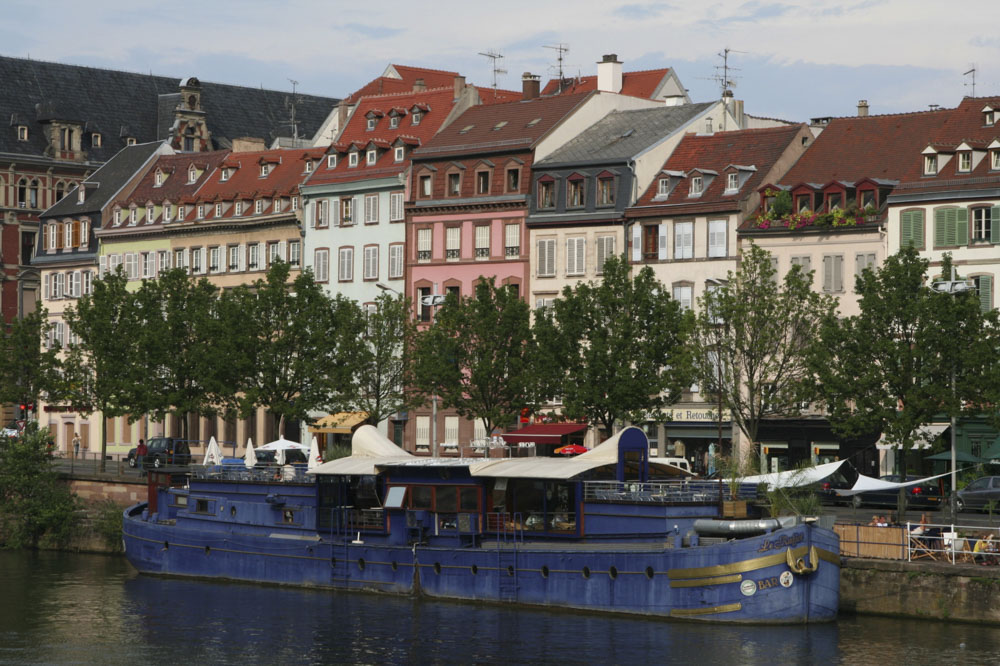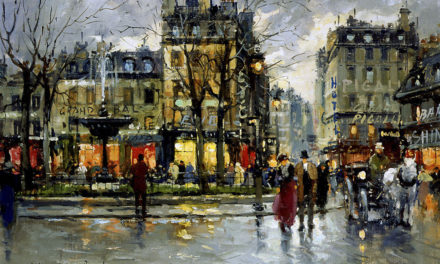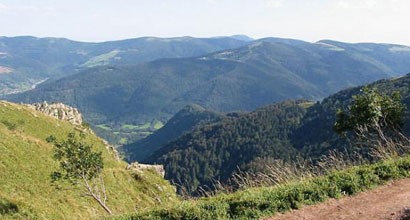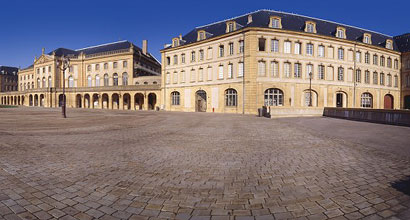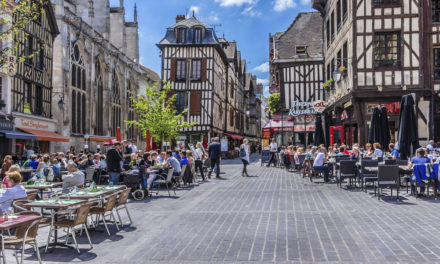Image – The disco barge bar ‘Le Rafiol’ moored alongside the Quai des Pecheurs, Copyright Atout France/Pierre Torset.
The Bas Rhin is where north meets south, the Germanic meets the Latin and where the Council of Europe and the European Parliament has its seat in Strasbourg. An important regional product is beer. There are now no less than 6 breweries in Alsace, most of which are household names, Heineken, Karlsbrau and Kronenbourg to mention but a few. Visits can be arranged by appointment. Alsace is responsible for more than 56% of the French production of beer.
Towns in the Bas Rhin
Book a Hotel in the Bas Rhin
Obernai
The monument of the patron saint of the department, Saint Odile, sits high above the charming medieval town of Obernai on the Mont Ste. Odile, the most visited place in Alsace after Haut Koenigsbourg. At a height of 761 metres, the panoramic vista from the Convent, which still exists, together with its restaurants and souvenir shops, extends to the Black Forest and the Rhine. The plains of Alsace fertilised by the Rhine, offer a vast variety of flora and fauna and contrast between the foothills of the impressive Vosges mountains.
The Piémont
The villages of the Piémont with their pretty half-timbered houses, flower decked balconies, corbelled balconies and oriel windows are delightfully picturesque. In contrast, the medieval ruins of the Châteaux of Wasenbourg, the two Windsteins and of Falkenstein, perched on mountain peaks near Niederbronn-les-Bains, lend a dramatic aspect to the landscape. In the Franco-Prussian war 1870 terrible battles were waged here. The Alsace section of the Maginot line, built to defend France from possible invasion, had approximately 2,000 placements many of which have been restored, giving an idea of what the defensive line really constituted.
Strasbourg
The cosmopolitan city of Strasbourg has six museums, three of them housed in the 18th century Palais Rohan with its sumptuous state apartments. On the opposite bank, the Cathedral has an incredible 19th Century astronomical clock with a variety of mechanical figures and chimes, a superb rose window, and an imposing façade of which Goethe said its ‘loftiness’ was linked to its beauty‘. Victor Hugo was deeply impressed by the rose window and by the spire which he described as ‘a veritable tiara of stone with its crown and its cross’ looking out across France, Switzerland and Germany. The Petite France Quarter is particularly charming with its covered bridges with their three defensive towers, overlooking the River Ill and the 17th century defensive Barrage of Vauban. Dr Albert Schweitzer, the Nobel Prize winner, born in Alsace in 1875, played the organ here in Saint Thomas’ Church. An International School is housed in the Gate House of the impressive Château de Pourtalès in Robertsau.
| Title | Address | Description |
|---|---|---|
BAS RHIN | Bas-Rhin, France |

